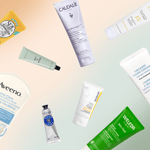The Practical Ways You Can Avoid Toxic Toiletries
Just what’s in the personal care products we use every day and, more importantly, how safe are they?

In 2009, baby hair made headlines. Testing from the U.S. lobby group Campaign for Safe Cosmetics discovered carcinogens in baby shampoos made by major manufacturers. Health Canada reviewed the data and announced that the amounts were so minuscule that parents would need to wash their babies’ hair 620 times a day to put their health at risk.
Trade organizations agreed with Health Canada and accused the group of fear mongering. But public concerns endured and, in response, manufacturers removed the chemicals from their products. On the one hand, yay! Body care products just got safer. On the other hand, did consumers just get spun? Such is the not-so-pretty issue of safety in personal care products. The major players include the government, trade organizations, lobby groups and for-profit manufacturers. “It’s a very political topic with many stakeholders,” says Lily Tse, founder and CEO of Think Dirty, a Toronto-based company with an app that rates the safety of cosmetic ingredients. “Everyone has their own agenda. These products are ruled by dated, poorly enforced legislation on the cusp of being updated by the government. Scientific data that only some people understand abounds, which makes it hard to know what products we should use.”
Our System and Toxic Toiletries
Canadians have access to a number of products considered cosmetics – a number that has been steadily increasing over the past two years. Cosmetics are regulated under the Food and Drugs Act (FDA) and the Cosmetic Regulations, administered by Health Canada’s Consumer Product Safety Directorate. We have a post-market approval system that requires companies to disclose their contact information, intended use of the product and list of ingredients (and amounts of each) to Health Canada within 10 days of first sale.
Health Canada does targeted testing to establish risk and address complaints, but only a fraction of products ever see the inside of a government lab. “It’s a daunting task to deal with the size of the marketplace,” says James Reinhart, director of a report issued by the Auditor General of Canada in early 2016. The report assessed the government’s management of chemicals in cosmetics and consumer products. “Testing is very limited, and even Health Canada admits that the amount they do is not enough and will never be enough,” he says.
To be considered safe, cosmetics must meet certain requirements like being free of microbial contaminants and particular heavy metals. Cosmetics must also adhere to Health Canada’s Cosmetic Ingredient Hotlist, a list that bans some chemicals and restricts others. For the past decade, the Government of Canada has been assessing the health and environmental risks of thousands of chemicals used in industry, including the personal care sector, and relevant conclusions help update the Hotlist. “Canada’s Chemicals Management Plan has been identified as one of the best in the world,” says Darren Praznik, president and CEO of the Canadian Cosmetic, Toiletry and Fragrance Association (CCTFA). As of last September, the Chemicals Management Plan had assessed 2,770 chemicals used for consumer products, cosmetics and industrial applications. They remain on target to reach their goal: assess all 43,000 chemicals identified as a priority by 2020.
Amounts Are Key
With chemicals in beauty products, quantity matters. “Almost everything has a hazardous property,” says Praznik. If you drink too much water, you can die. Good-for-you blueberries contain hydroquinone in tiny amounts, which has the potential to cause cancer in rodents (although not deemed a carcinogen to humans). Also, some lipsticks may contain trace amounts of lead because it lead is naturally found in nature and may be found as a trace impurity in the mineral-based pigments used in lipsticks for colour. Health Canada requires that cosmetics contain no more than 10 parts per million (ppm) of lead. A report from the FDA found that a sample of products in the U.S. market contain an average of one ppm.
Tse’s app, Think Dirty, looks to the ingredient list on product packages to rate their overall safety. Her company doesn’t actually test products or consider the amounts of questionable substances – just their existence. “Whether there’s 0.001 or one percent of potentially harmful ingredients, ” she says. “We want to alert you if there’s something unsafe in it.” Indeed, many groups and consumers worry that some substances at any dose merit concern, so the debates about sunscreens, shampoos and lipsticks continue.
Jean Colas, a beauty-industry veteran and executive vice-president of marketing and sales for Lotus Aroma in Sainte-Julie, QC, says that companies sometimes draw attention to a substance that’s restricted – but not banned – by the Hotlist and whip up a controversy. “They might be the whistle-blower of a certain ingredient, so it will be removed,” he says. “It helps them move forward with their own ingredients.”
Finding the Balance
But newly formulated chemicals – or those seldom used in the past – often lack track records and sufficient scientific study. For instance, concerns over parabens caused many companies to switch to the preservatives methylisothiazolinone (MI) and methylchloroisothiazolinone (MCI) until consumers began to complain about irritated skin. In 2015, Health Canada restricted these substances, so they can no longer be used in leave-on products, such as creams and deodorants, as of last December. Praznik says it can be tricky to find ingredients that kill dangerous microbes while being safe for humans and the environment.
It’s not just the dose but how we use a product that matters. You inevitably ingest some lipstick and toothpaste, but most cosmetics we wear on our skin don’t get absorbed into our bodies – it takes tiny, specially formulated molecules to make it through. “The skin is a quite impervious layer of protection,” says Praznik. Government testing takes into account how we use a product and how often. Are their algorithms perfect? Over the past few years, consumer groups have voiced concerns over spray-on sunscreens and whether they’re safe to inhale, especially when children spray themselves on a windy day or in an enclosed space.
Meanwhile, Health Canada allows cosmetic companies to forgo listing the ingredients that go into the scents, flavours and perfumes of their products to protect proprietary information. The Auditor General of Canada’s report identified this as one of many gaps in protecting consumers. “Even Health Canada’s own data talks about endocrine disrupters that are dangerous, even at low levels,” says Reinhart. The report highlighted other flaws: slow responses to problems, few efforts to nab counterfeit products and scant testing. “Is this really a preventive regimen?” says Reinhart.
Health Canada says it’s addressing the concerns of the Auditor General of Canada’s report. Meanwhile, the government is proposing an overhaul of how self-care products in general are regulated. After all, laws governing cosmetics date back to the early 1950s, and this category is lumped with consumer products orphaned from natural health products and over-the-counter drugs, which they resemble in many ways. These regulations are still in the draft stage, and it will be a year or more before they could change our bathroom and beauty products. If they bring in more transparency and testing, that would be better for the health and safety of Canadians. And better might be as good as it ever gets for the surprisingly complex stuff we put on our bodies every day.




